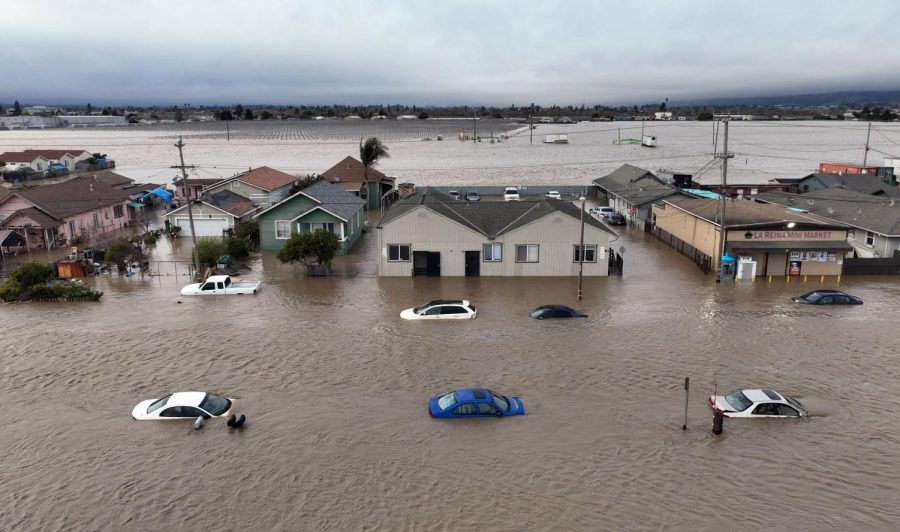California’s Atmospheric Rivers shine spotlight on Climate Change and Extreme Weather Crises
April 6, 2023
Within the last decade, extreme weather events have become a recurring trend across the United States, carving deadly paths of destruction and leading to billions of dollars in damage. Most recently, the barrage of atmospheric rivers in California have served as a warning to society about the effects of climate change on the planet.
In the past few months, various atmospheric rivers have contributed to large scopes of destruction throughout California. Bringing heavy rain and often winds, these events have led to large amounts of flooding across the state. Many residents have voiced their concerns about the statewide response as well as not having access to basic necessities while streets remain flooded.
The state has been pummeled with a total of 17 atmospheric rivers since December, per the Washington Post. At the end of March, yet another storm barreled through the region, bringing two feet of snow to the Sierra Nevada region. Although the record snowfall has helped major ski resorts, not everyone on the West Coast is rejoicing.
In an interview with the Washington Post, a local meteorologist said that the state “is ready for a break.” Many residents spoke out to NBC News in the wake of the storms, saying that they have not been able to leave their homes or obtain food.
In this midst of a years-long drought, the snowfall filled major bodies of water. Accumulation in the state’s snowpack was reportedly “235% of normal,” breaking the record of 234% of normal in 1982-83, (California Department of Water Resources). Specifically, areas such as Mammoth Mountain have seen major snow accumulation due to the increased snowpack. The 1969-70 record of 668.5 inches was broken this year, with the new record being 702 inches.
The situation in California is part of a larger global issue related to climate change and extreme weather. According to a study done in the text “Resilient Decarbonization for the United States: Lessons for Electric Systems from a Decade of Extreme Weather,” unique and destructive weather events have been on the rise. From 2010 through 2019, there were “119 extreme weather events.”
Extreme weather events come with severe consequences, necessitating communities to rebuild, a process that can take years. The study found that the 119 weather events mentioned above caused a total of more than $800 billion dollars in damage. Additionally, some 5200 lives were taken in the process.
Aside from the atmospheric rivers in California, major hurricanes have also left miles of destruction in areas such as Puerto Rico. In 2017, Hurricane Maria hit the island, leaving nearly all of the island without power. According to the study, Maria caused approximately $100 million in damages. Almost a year passed before power was fully restored to all island residents.
The situations in California and Puerto Rico represent a call to action to the world when it comes to climate change, especially since “we are more likely to see more storms threaten [the island] over the coming thirty years.” Recently, global summits have convened to discuss ways in which the planet can be prevented from future extreme damage.
An article published in the Australian Quarterly magazine supported the need for more global action, stating, “the need for international cooperation on efforts to tackle climate change has never been more urgent.” However, in a world featuring record carbon emissions and pollution, many experts have concerns. One issue that has surfaced is the fact that “rich nations, including the US…effectively weaponized the 1.5 degree Celsius target against developing countries.”
The dire climate change situation has only grown in the last week, with a string of 50 tornadoes hitting the Midwest. Remarkable loss of life and property have been reported, with some towns almost being unrecognizable. Just like numerous communities around the world, residents are now in the process of rebuilding their lives.




